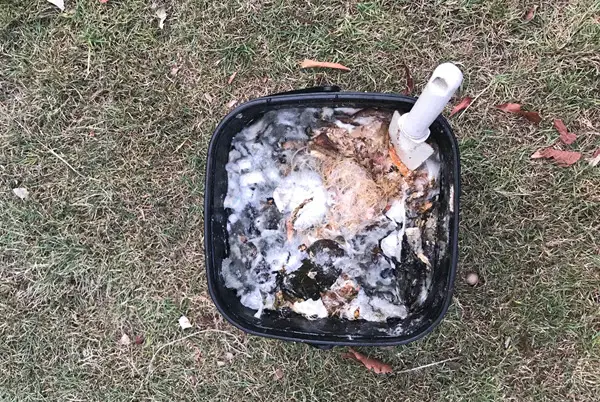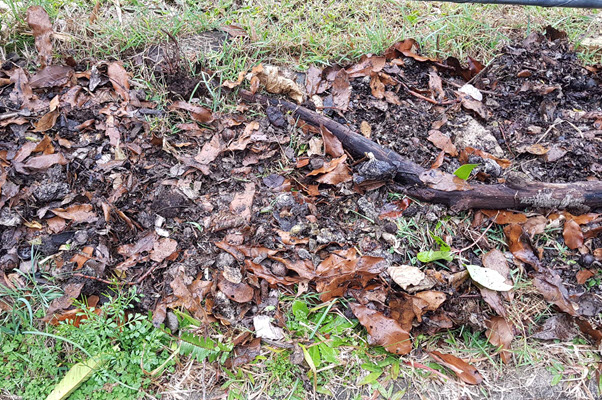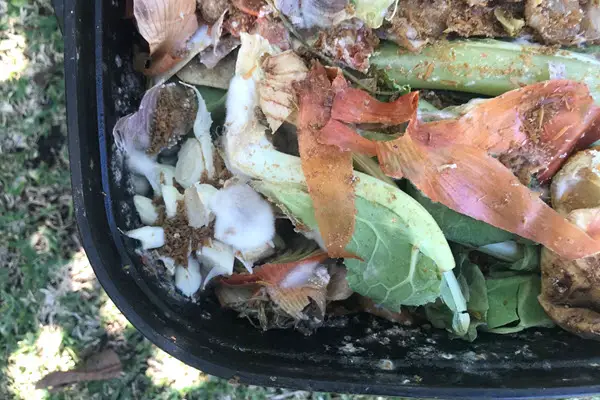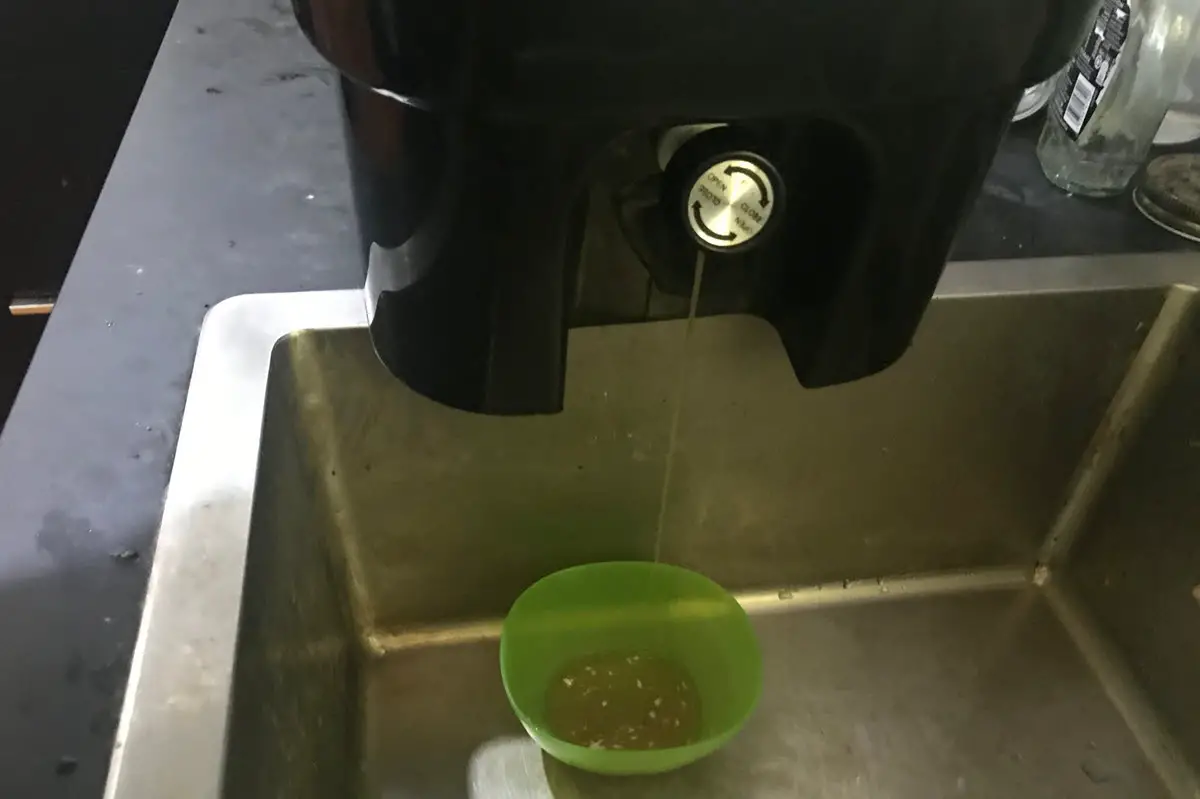Bokashi vs Compost: Differences, Pros and Cons of the two methods
As much as I hate food waste, there’s no way to escape it!
We all produce it and we all produce tons of it!

The best option we have is to turn all that waste into nutrient-rich soil via composting! But what is the best way to achieve this? In this article, we explore the differences, pros and cons of Bokashi vs traditional composting.
Spoiler: they are both excellent and can co-exist!
1 What is the difference between the Bokashi method and traditional compost method?
The environment and breakdown method of composting are the biggest differences!
Traditional composting uses decomposition to break your waste and turn it into soil. It happens inside a compost bin that allows air-flow. In order to have optimum results, you will need a good balance between nitrogen-rich waste (or green waste, such as food waste and lawn clippings) and carbon-rich wate (brown waste, such as dry leaves and paper).

Traditional composting is an ‘aerobic’ process and relies on air-flow (oxygen) for decomposition to happen – hence the constant need for the compost bins to be stirred or tumbled!
Bokashi means ‘organic fermentation method’ in Japanese. As the name suggests, it relies on fermentation – as opposed to decomposition – to break your food scraps down.
Bokashi happens inside a sealed environment – or Bokashi bucket – with very limited air.
It works pretty much by tossing food scraps (and pretty much any organic matter) into a sealed bucket and adding Bokashi bran (or Bokashi spray) to it. The bran (or spray) contains microorganisms (or microbes) that break down this waste by fermenting it. These microbes are considered ‘good bacteria’ and will produce a white mold inside your bin (this is a sign it is working well).
This method is anaerobic and it relies on a ‘lack of oxygen’ for optimum results. Another point of difference is that your food scraps should always be ‘pressed down’ together to eliminate pockets of air and water.

Hint: I do the ‘pressing down’ with an old potato masher!
2 One-stage process (compost) vs two stage process (Bokashi)
One of the biggest differences between Bokashi composting and traditional composting is the fact that Bokashi is a two-step process.
Once your Bokashi bucket is full, it has one more step before it turns into rich-nutrient soil. You will need to either bury it or add it to a traditional compost bin before it turns into soil.
On the other hand, traditional compost is a one-step process and once decomposition has happened, that’s it! It can be used in the garden.
So, why bother with Bokashi if I still need to add it to the compost pile (or bury)?
In my experience, there are two main advantages of doing Bokashi first! I will go through both next: time for processing and the types of food that can be composted.

3 What can be composted in Bokashi and in traditional compost?
With traditional composting, there is certain food waste not recommended for it. That includes meat, dairy, eggs, fats and oils.
The main risk is that they may have a strong smell (think rotten fish!) and may attract pests such as rodents.
From personal experience, once you have a rodent infestation, it can be hard to get rid of without professional help! And worse, they often migrate from the garden to the house!
With Bokashi, all of the above items are OK to go into your bucket as the microbes will ferment and break them down. By then, they will be a lot less attractive to pests and the smell will be just a sour one (as opposed to rotten), making them a lot safer to be transferred into the compost bin.
It is also worth noting that there are items that technically could go into a Bokashi bin, however, due to space constraints, are more suitable for traditional compost. Lawn clippings are a classic example of green waste that a lot of households (including my own) have in large quantities and best suited to a large bin.

Bokashi buckets are a great size for kitchen waste, but far too small for garden waste.
4 Time for processing
Another advantage of doing Bokashi first and then transferring to compost is the time it takes for processing. Bokashi is faster!
If done properly – microbes added daily, waste being pressed down tightly and liquid being drained regularly – Bokashi will take two to three weeks to break down your food waste. You can tell if your system is working well by watching the white mold grow. That’s a sign the microbes are doing their job and breaking your food down.

Once a bucket-full is added to the compost, it will probably take two to three months (depending on individual circumstances) before it turns into nutrient-rich soil. The white mold is perfectly safe for the compost. In fact, the microbes will help with the composting task.
With traditional compost, the decomposition can take up to six months. It can be a bit faster if you are a dedicated composter.
Again, in order to obtain your desired nutrient-rich soil, the process needs to be done properly. That includes maintaining the necessary ratio between green waste and brown waste, and constantly turning and stirring the compost to allow air-flow (oxygen) to break things down.
5 Bokashi smell vs compost smell
Another big difference between the two methods is the smell!
As Bokashi composting happens inside a sealed container, you pretty much have an odour-free system that can live inside your kitchen.
Of course, you will have to open it to toss your food scraps in, to add the microbes (the bran) and Bokashi tea (the excess liquid) needs to be regularly drained. There is no way you can do the above without the smell!
A lot of Bokashi enthusiasts will go as far as to say that it’s a pleasant ‘pickles-like’ smell! Whether I agree it does smell a lot like pickled food, I would not call it ‘pleasant’, but I don’t find it revolting either – like the smell of rotten food.
As you only smell what’s inside a Bokashi bucket for a few minutes each day, it is very manageable.
Attention: If your Bokashi bin constantly smells, that is probably a sign it is not tightly sealed!

As mentioned earlier, traditional compost needs air flow for decomposition to happen. Although it happens inside a bin – it is not a sealed container.
Air goes in and out – so does smell!
The thing with compost is that, if you have the right balance between green and brown waste, it should not smell bad! Most agree that a bad smell is a sign that you have excess food waste (or nitrogen-rich green waste) compared to carbon-rich brown waste (i.e. dry leaves). A compost bin with the right balance should smell like soil or dirt.
Nevertheless, keeping the balance right can be easier said than done!
You really need to pay close attention to your compost bin balance to avoid bad smells – something I often fail to do!
I find Bokashi to be a lot more forgiving!
6 Risk of pests in the compost bin
As a tightly sealed system, Bokashi is excellent at keeping away insects, rodents and the like. So, your risk of infestation is pretty much close to zero.
The only times I had issues with insect larvae was when eggs got into my food scraps before I threw them in my Bokashi bucket!
The good news is that insect eggs and larvae are unlikely to survive in the anaerobic Bokashi environment. Keeping your bucket unopened overnight should quickly get rid of the problem.
Traditional compost is a lot more accessible for insects and rodents as these bins are not perfectly sealed.
Although not as efficient as Bokashi, there are things you can do to minimise the risk of infestation.
Constantly turning and stirring your compost pile will keep the inside temperature hot and less attractive for pests. Avoiding certain food such as meat and dairy products will also make your compost less appealing to the wildlife.

It is also important to note that some little creatures (i.e. spiders, centipedes and beetles) are actually very helpful with the composting process. So, it is not all bad news if the right living creatures take up residence in the compost pile.
7 Space available
Not everyone has a garden, but pretty much everyone has a kitchen in their house!
Bokashi buckets are typically small and designed to be kept and used in the kitchen. The bigger buckets hold a 5 gallon capacity.
Traditional compost bins come in different sizes, but are generally much-much bigger than Bokashi. They are designed for the garden. Given that size, they are ideal for large amounts of waste such as lawn clippings and tree branches.
But what can I do with my Bokashi if I live in an apartment and don’t have a compost bin or outdoor space for burying?
Community gardens are becoming increasingly popular and often accept fermented Bokashi waste.
8 Bokashi tea needs constant draining
One distinguished aspect of Bokashi is its famous ‘Bokashi tea’ – a by-product of the fermentation process that needs to be constantly drained out of the bucket. A lot of Bokashi enthusiasts swear by it and consider it to be a great fertilizer.
Personally, I had mixed results with it. It is quite an acidic liquid and needs to be diluted to be safe. I confess that I killed potted plants – including my daughter’s sprouting indoor avocado – with it, however outdoor garden plants tend to do well with it.

Bokashi tea is not the main reason why I do Bokashi composting, but a lot of people love it! Maybe, they have worked out how to make the most of it.
Final thoughts on Bokashi vs Compost
While there are differences between traditional composting and Bokashi composting, they can perfectly co-exist. For those who do not have a garden, Bokashi is an excellent option.
Frequently Asked Questions
What is the difference between Bokashi and compost?
The environment and breakdown method of composting are the biggest differences – Bokashi uses fermentation to break organic waste down and compost uses decomposition.
Can I put Bokashi in compost?
You absolutely can! Fermented Bokashi waste will accelerate the decomposition process happening inside a compost bin.
How do you compost with Bokashi?
You will need a Bokashi bucket and Bokashi bran (or spray) in order to do Bokashi composting. You can add organic waste to your bucket together with some bran (or spray) containing microbes that will ferment and break down your waste.
Can you put eggshells in Bokashi?
Yes, it is perfectly safe to add eggshells in Bokashi. It is important to note that eggshells take a while to break down, so it is best to crush them into smaller pieces to fast track the process.






